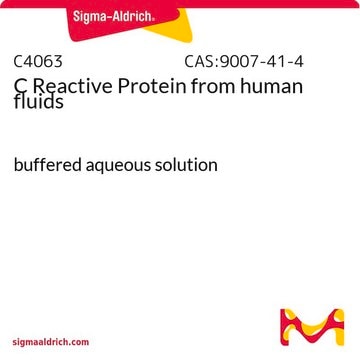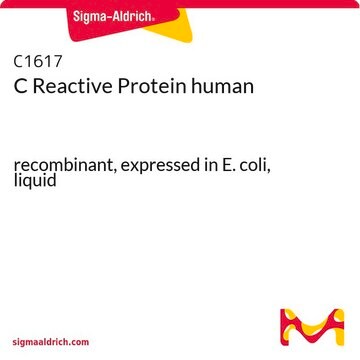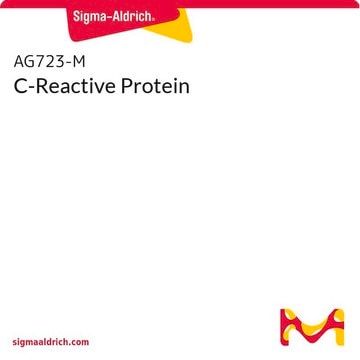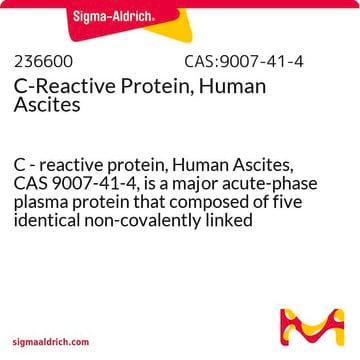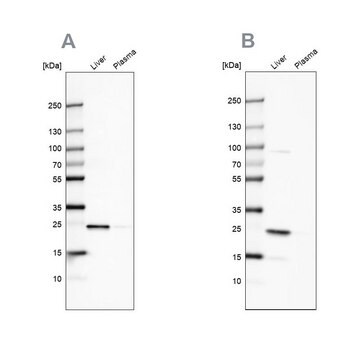SRP6267
C-reactive/CRP human
recombinant, expressed in HEK 293 cells, ≥95% (SDS-PAGE)
Synonim(y):
C-reactive protein, CRP, PTX1
Wybierz wielkość
1520,00 zł
Wybierz wielkość
About This Item
1520,00 zł
Polecane produkty
pochodzenie biologiczne
human
rekombinowane
expressed in HEK 293 cells
znacznik
6-His tagged (C-terminus)
Próba
≥95% (SDS-PAGE)
Formularz
lyophilized powder
masa cząsteczkowa
calculated mol wt 24 kDa
observed mol wt 26 kDa (DTT-reduced. Phe17 is the predicted N-terminus.)
opakowanie
pkg of 100 μg
zanieczyszczenia
<1 EU/μg endotoxin (LAL test)
numer dostępu UniProt
Warunki transportu
wet ice
temp. przechowywania
−20°C
informacje o genach
human ... CRP(1401)
Opis ogólny
Działania biochem./fizjol.
Postać fizyczna
Rekonstytucja
Kod klasy składowania
11 - Combustible Solids
Klasa zagrożenia wodnego (WGK)
WGK 3
Temperatura zapłonu (°F)
Not applicable
Temperatura zapłonu (°C)
Not applicable
Wybierz jedną z najnowszych wersji:
Certyfikaty analizy (CoA)
Nie widzisz odpowiedniej wersji?
Jeśli potrzebujesz konkretnej wersji, możesz wyszukać konkretny certyfikat według numeru partii lub serii.
Masz już ten produkt?
Dokumenty związane z niedawno zakupionymi produktami zostały zamieszczone w Bibliotece dokumentów.
Klienci oglądali również te produkty
Active Filters
Nasz zespół naukowców ma doświadczenie we wszystkich obszarach badań, w tym w naukach przyrodniczych, materiałoznawstwie, syntezie chemicznej, chromatografii, analityce i wielu innych dziedzinach.
Skontaktuj się z zespołem ds. pomocy technicznej